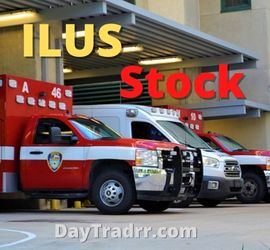What Is Market Risk?
 Market risk or systematic risk refers to the uncertainty associated with any investment decision due to the factors that affect an entire market. Market risk is the possibility of investment losses due to factors that affect the overall performance of the entire financial markets. It is also called “systematic risk,” and cannot be eliminated through diversification. However, it can be hedged to some degree in other ways. Sources of systematic risk include recessions, political turmoil, changes in interest rates, natural disasters, and terrorist attacks. Systematic, or market risk tends to influence the entire market at the same time.
Market risk or systematic risk refers to the uncertainty associated with any investment decision due to the factors that affect an entire market. Market risk is the possibility of investment losses due to factors that affect the overall performance of the entire financial markets. It is also called “systematic risk,” and cannot be eliminated through diversification. However, it can be hedged to some degree in other ways. Sources of systematic risk include recessions, political turmoil, changes in interest rates, natural disasters, and terrorist attacks. Systematic, or market risk tends to influence the entire market at the same time.
Market Risk – a Deeper Look
Market (systematic) risk and specific risk (unsystematic) make up the two major categories of investment risk. The most common types of market risks include interest rate risk, equity risk, currency risk, and commodity risk. Publicly traded companies in the United States are required by the Securities and Exchange Commission (SEC) to disclose how their productivity and results may be linked to the performance of the financial markets. This requirement is meant to detail a company’s exposure to financial risk.1 For example, a company providing derivative investments or foreign exchange futures may be more exposed to financial risk than companies that do not provide these types of investments. This information helps investors and traders make decisions based on their own risk management rules.
Main Types of Market Risk
There are several different risk factors that makeup market risk.
- Currency risk or currency exchange-rate risk is the change in the price of one currency in relation to another. Investors or firms holding assets in another country are subject to currency risk. It is the risk that currency exchange rates will possibly go up or down.
- Equity risk is the risk involved in the changing prices of stock investments, and The risk that share prices will go up or down
- Inflation risk is the potential for inflation to increase the price of all goods and services such that it undermines the value of money
- Commodity risk covers the changing prices of commodities such as crude oil and corn. It is the possibility that commodity prices such as metals can change value dramatically.
- Interest rate risk covers the volatility that may accompany interest rate fluctuations due to fundamental factors, such as central bank announcements related to changes in monetary policy. This risk is most relevant to investments in fixed-income securities, such as bonds. It is the risk that comes from an increase or decrease in interest rates
Volatility and Hedging Market Risk
Market risk ultimately exists because of price changes. The standard deviation of changes in the prices of stocks, currencies, or commodities is referred to as price volatility. Volatility is rated in annualized terms and may be expressed as an absolute number, such as $10, or a percentage of the initial value, such as 10%. Because the risk affects the entire market, it cannot be diversified in order to be mitigated. However, it can be hedged for minimal exposure. As a result, investors may fail to earn expected returns. This, despite the rigorous application of fundamental and technical analysis on the particular investment option.
Investors can utilize hedging strategies to protect against volatility and market risk. Targeting specific securities, investors can buy put options to protect against a downside move. Investors who want to hedge a large portfolio of stocks can utilize index options to hedge against risk.
Measuring Market Risk
To measure market risk, investors and analysts use the value-at-risk (VaR) method. VaR modeling is a statistical risk management method. It quantifies a stock or portfolio’s potential loss as well as the probability of that potential loss occurring. While well-known and widely utilized, the VaR method requires certain assumptions that limit its precision. For example, it assumes that the makeup and content of the portfolio being measured are unchanged over a specified period. Though this may be acceptable for short-term horizons, it may provide less accurate measurements for long-term investments.
Beta is another relevant metric. It measures the volatility of a security or portfolio in comparison to the market as a whole. It is used in the capital asset pricing model (CAPM) to calculate the expected return of an asset.
(Source: ibid)
Diversification
Risk can be reduced to some extent if you diversify your investments, i.e. widen your portfolio. However, it is impossible to eliminate all risks. Some market risks are not possible to prevent or foresee. Natural disasters, such as hurricanes, volcanic eruptions, and earthquakes can strike at any time and may affect the value of your investments. Other sources of market risk include terrorist attacks, political instability, recessions, and trade embargoes.
According to the Board of Governors of the Federal Reserve System (America’s central bank):
“Market risk encompasses the risk of financial loss resulting from movements in market prices.”
The European Banking Authority (EBA) defines market risk as to the risk of losses on-and-off balance sheet positions that occur as a result of adverse movements in market prices.
“From a regulatory perspective, the market risk stems from all the positions included in banks’ trading book as well as from commodity and foreign exchange risk positions in the whole balance sheet.”
The majority of investors know that investing comes with risks as well as rewards, and that, overall, the greater the risk, the bigger the potential reward. While it is vital to consider the risks in the context of a specific market or investment class, it is also just as important to consider market risk.
(Source: marketbusinessnews.com)
Federal Reserve and Market Risk Management
According to the Board of Governors of the Federal Reserve System (America’s central bank):
“Market risk encompasses the risk of financial loss resulting from movements in market prices. Market risk is rated based upon, but not limited to, an assessment of the following evaluation factors:
- The sensitivity of the financial institution’s earnings or the economic value of its capital to adverse changes in interest rates, foreign exchange rates, commodity prices, or equity prices.
- The ability of management to identify, measure, monitor, and control exposure to market risk given the institution’s size, complexity, and risk profile.
- The nature and complexity of interest rate risk exposure arising from non-trading positions.
- Where appropriate, the nature and complexity of market risk exposure arising from trading and foreign operations.
This topic also provides specific guidance on interest-rates, which is the exposure of a bank’s current and future earnings and capital arising from adverse movements in interest rates, and the market risk capital rule, which establishes regulatory capital requirements for bank holding companies and state member banks with significant exposure to certain market risks.”
(Source: federalreserve.gov)
Example of the Concept
Imagine you wish to buy a car. You can purchase a new one under full warranty, or a second-hand vehicle with no warranty. Which one you choose depends on a number of factors. Things like how much you can afford, which features are important for you, your knowledge of mechanics, and your risk tolerance. As you check out different cars, you find that some makes and models perform better than others. Some have superior safety and repair histories.
However, regardless of which vehicle you buy, there are several risks on the road which have nothing to do with your chosen car. Nevertheless, these can impact your driving experience considerably. Examples include animals crossing the road, being hit by lightning, and weather conditions. Also, road conditions, traffic lights working incorrectly, and traffic congestion. While these factors might be beyond your control, you need to be aware of them.
The Financial Industry Regulatory Authority, a private corporation in the US that acts as a self-regulatory organization, has the following advice for investors:
“Investments involve varying levels and types of risks. These risks can be associated with the specific investment, or with the marketplace as a whole. As you build and maintain your portfolio, remember that global events and other factors you cannot control can impact the value of your investments. And be sure to take both business risks and market risks into account.” (Source: finra.org)
Next UP: Day Trading For Beginners – What Is A Day Trader?
Day trading can be summarized simply as buying underlying security and quickly selling or closing out the position within a single trading day. Ideally, a day trader wants to “cash-out” by the end of each day with no open positions to avoid the risk of losses by holding the security overnight. Day trading is not for everyone and carries significant risks. It requires an in-depth understanding of how the markets work and various strategies for profiting in the short term. Short term profits require a very different approach compared to traditional long term, buy and hold investment strategies.




